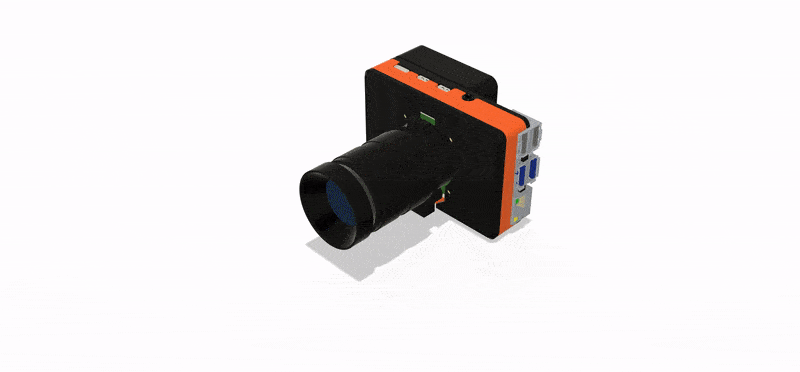-
1Supplies
1x 16mm Telephoto Lens or 6mm Wide-angle Lens
3D Printed Parts
-
2Fusion 360 Design and 3D Printing
- 3D Print all the parts given Click For STL Files
- You can Modify The Design Model in Fusion 360 Software
![]()
-
3Step 3
- Assemble the 3D printed parts as shown in images with the help of 8mm screws.
![]()
![]()
![]()
- Assemble the 3D printed parts as shown in images with the help of 8mm screws.
-
4Step 4
- Put the Raspberry Pi in assembled 3D printed enclosure and fix it with 8mm screws.
![]()
![]()
![]()
![]()
-
5Step 5
- Take the part3 and fix the camera module to it with the help of 5mm screws as shown.
![]()
![]()
![]()
-
6Step 6
- Snap the camera assembly into raspberry pi assembly.
![]()
![]()
![]()
-
7Step 7
- Attach the 5v fan to part 4 using M2.5 15mm screws.
- Snap the fan cover(part 5) onto the fan.
(Don't use the screws that I used for adding the fan because they may damage the board if not used properly)
![]()
![]()
![]()
![]()
-
8Step 8
- Snap the fan assembly into main assembly after connecting the camera cable and folding it inside carefully.
![]()
- Connect the 5V fan to GND and 5V DC
![]()
- You can use some glue if you feel that its not a tight fit.
![]()
![]()
![]()
![]()
- Now put the Lens on the camera and you are good to go.
(I have a 16mm telephoto lens the images on the lens are zoomed that means I have to place camera far from subject to capture full frame object but the background bluer it gives is amazing it is good for photography you can use 6mm wide-angle for wide frame)
![]()
- Snap the fan assembly into main assembly after connecting the camera cable and folding it inside carefully.
-
9Create Account
- Create a remote.it account and login with email and password.
![]()
-
10Setting Up Remote VNC
- First install the Raspberry Pi OS on the memory and setup the system.
- Connect the system via HDMI to a external monitor.
- Enable SSH and VNC Viewer.
![]()
- Run the commands
sudo apt-get upgrade sudo apt-get update
![]()
- If it asks for any permission (Yes/No) type y and enter.
- Run the following command for installing Remote.it service on Raspberry Pi.
sudo apt install connectd
- To launch the service run following command
sudo connectd_installer
![]()
- Now select the option 1 and login with your email and password.
- After login you will find the active services and different options to add remote services.
![]()
- You can choose option 4 for activating remote VNC service and type the name for you service.
- After registering the service you can find the attached service with your given name you can connect it and launch it in VNC viewer with your Raspberry pi name and password.
![]()
![]()
Pi Cam - A Remote Raspberry Pi Desktop/Camera/Serv
Pi Cam is a 3D Printed Compact Remote Raspberry Pi Desktop/Camera/Server
 Mukesh Sankhla
Mukesh Sankhla
































Discussions
Become a Hackaday.io Member
Create an account to leave a comment. Already have an account? Log In.
I agree, a small screen for setting up the camera would be nice, but a great project. It would be perfect to watch the birds, and squirrels, eating the seed on our back patio. Are the 3D files available?
Are you sure? yes | no
Yes here are youe 3D files https://github.com/MukeshSankhla/Pi-Cam---a-Remote-Raspberry-Pi-Desktop-Camera-Server
Are you sure? yes | no
I'd love to see a little screen added onto the back of this. Great stuff!
Are you sure? yes | no
Thank You!
I personally feel that small screens are not enough to operate the RPi since we have to either add a keyboard and mouse or have a on screen keyboard activated all the times if it's a touch screen, I feel our mobile and tablets are better option since the touch keyboard pops up when we need.
Are you sure? yes | no
Oh, I completely agree; you couldn't operate the Pi as a computer via a tiny little screen. It would be really useful with its camera aesthetic, however, and be useful for basic point and shoot functions with a little button.
Are you sure? yes | no